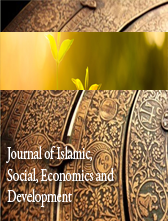A REVIEW ON EFFECTIVENESS OF TRICHODERMA SPP TO CONTROL BASAL STEM ROT DISEASE IN OIL PALM
Abstract
Oil palm (Elaeis guineensis) is the primary agriculture industry in Malaysia. Currently, Malaysia ranks second in palm oil production after Indonesia. The one factor of oil palm production decreasing is because disease infection. The major oil palm disease in Malaysia is Basal Stem Rot (BSR) that causes by Ganoderma boninense. BSR disease can causes yield of oil palm production decrease in Malaysia. Various control approaches, such as cultural control, biological control, and chemical control, can be used to combat this disease in oil palm. Nowadays, many companies or smallholders use chemical control to overcome BSR such as uses hexaconazole in application injection fungicides. However, chemical control can give disadvantage to human health, especially to agricultural farmworkers that use chemicals. This review focus on uses of Trichoderma spp. as a biological control in controlling BSR disease in oil palm because the implementation of biological control is more safe compared to the use of chemical. This study review the effectiveness of biological control, which uses Trichoderma spp. and to review the factor efficiency that influencing Trichoderma spp. as biological agent to control BSR disease. The finding shows the use of Trichoderma spp. as biological control showed effective in terms of controlling the severity of BSR that affected to oil palm crop.













